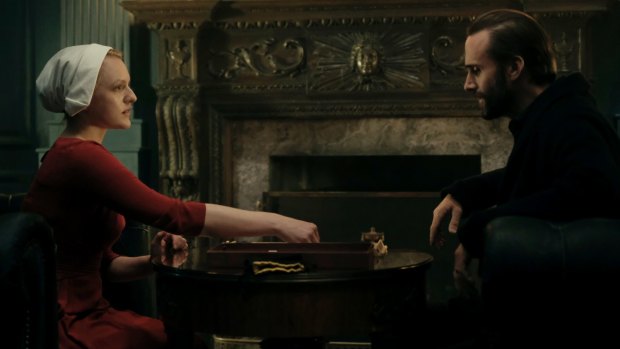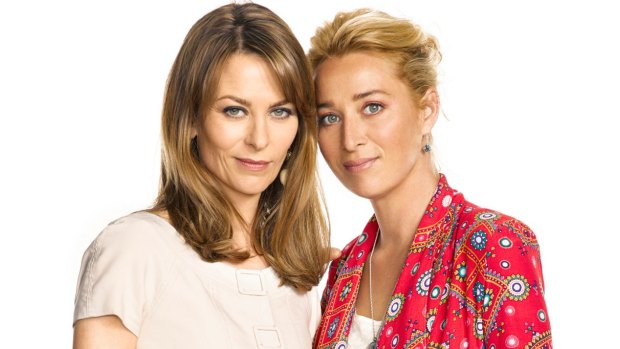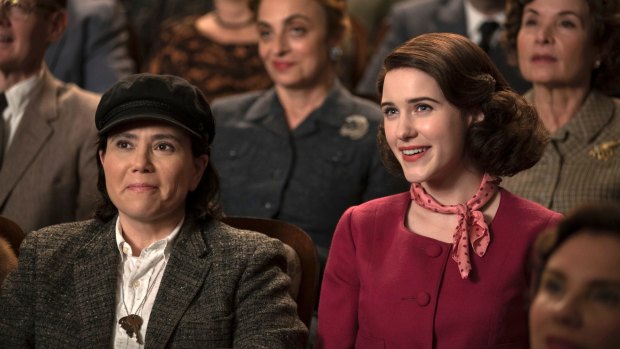- COMMENT
- Culture
- TV & radio
This was published 6 years ago
Streaming services a boon for viewers but Aussie drama is under pressure
By Debi Enker
There's no doubt that this era of peak TV has been a bonanza for viewers. People who've subscribed to the SVOD (streaming video on demand) services that are competing for attention can happily hop from one drama series to the next: there's always something interesting on offer.
Over the past year, that's meant going from, say, Ozark, Mindhunter, Stranger Things and The Crown on Netflix, to Better Call Saul, Transparent and Billions on Stan, to I Love Dick and The Marvelous Mrs Maisel on Amazon Prime.
Meanwhile, SBS On Demand has been establishing itself as the free SVOD alternative, offering an array of imported goodies, from Midnight Sun, Fargo, The Handmaid's Tale, Trapped and Occupied to The Bureau and Spin.
But the common denominator and sadly inescapable truth here is that none of these series, in fact none of the memorable drama series of 2017, is home-grown. While the arrival of streaming services has been a goldmine for viewers, it's also placed drama production in the already struggling Australian industry under increased pressure.

Offred (Elisabeth Moss) and Commander Waterford (Joseph Fiennes) in The Handmaid's Tale 'Birth Day' episode.Credit: George Kraychyk/Hulu)
Even before the SVOD services launched, local producers, working in a relatively small market on the global stage, had to do more with less. Dramas here are made faster and cheaper than their equivalents in comparable countries. These series need overseas sales and now appear on international platforms alongside productions judged to have thematic similarities. So they have to look as though they belong there, not like poor relations who've somehow stumbled into the space.
A survey of the programs being touted for 2018 only increases the level of concern about the local scene. Reality TV rules on the commercial channels as free-to-air networks continue their reliance on light entertainment. At the "upfronts" late in 2017, where networks presented their programs for the coming year, it was striking – and, frankly, depressing – to see how few of the big-ticket items were dramas.
When Channel Ten did its launch – whose subtext was a relieved cheer of "We're still here!" – not a single one of the chosen highlights was a drama. Admittedly, at that point, the network was still in administration, with the CBS takeover yet to be confirmed. But still, it was a sad spectacle for drama devotees: the returns of I'm a Celebrity ... Get Me Out of Here!, MasterChef, The Bachelor and Australian Survivor. Replacements for Offspring, The Wrong Girl or Sisters? Nope.
When Australian dramas do appear, they're shorter than they used to be: series that once ran for eight, 10 or 12 episodes are now shoe-horned into six. On SBS, it's four. Or maybe they're boiled down to telemovies. Nine is currently spruiking Underbelly Files: Chopper, which is two telemovies, rather than the multi-part series of the past. Seven's revival of The Doctor Blake Mysteries, which has been thrown into doubt after allegations about the behaviour of the show's star, consisted of four telemovies.

Australian dramas such as Offspring are being squeezed out by reality TV shows.Credit: Ashley Crawford
While dramas have been shrinking, another trend has been evident: the fashion for new versions of old films and TV series. There's been a bunch of them, billed as "reimaginings" or sequels: Wentworth, Puberty Blues, Devil's Playground, Wake in Fright, Wolf Creek, Romper Stomper. And, coming soon, Foxtel's Picnic at Hanging Rock and the ABC's Mystery Road.
This pattern could be read in at least a couple of ways. Taking a positive view, it signals a rediscovery of assets and a desire to recast them for a new generation. A less edifying hypothesis would be that TV networks and the SVOD services that are choosing to invest in local productions are risk-averse. They're reluctant to take a chance on an original idea, instead opting for a known quantity in the hope that, if it's been successful once, it could be again.

Alex Borstein as Susie Myerson, left, and Rachel Brosnahan as Midge Maisel in The Marvelous Mrs. Maisel.Credit: Nicole Rivelli
It's clear that our industry needs assistance. If the free market is allowed go its merry way without intervention, the local production slate is likely to look punier with each passing each year. The commercial FTA channels appear to invest in drama because they are obliged to by a quota system imposing minimum levels of production.
Given that the SVOD services are participating in and profiting from this market locally, it would be reasonable if they were also required to invest in Australian-made production. It seems clear that, if we want to preserve, protect, and, yes, nurture, our local industry – which we should, for a host of reasons – the government needs to intervene.
Late last year, a number of industry associations and guilds banded together to organise the Make it Australian campaign. One of its goals is to lobby the government to change the rules to ensure that new players like Netflix, YouTube, Stan, ISPs and telcos are obliged to create original local programs.
Here's hoping someone in Canberra is listening and cares enough to act.
Twitter: @DebiEnker